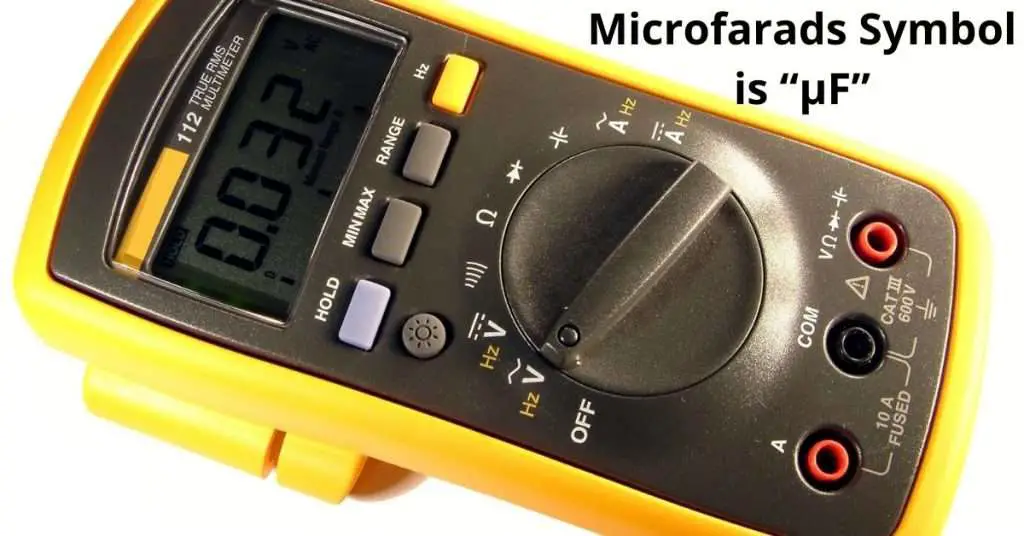While measuring capacitance, many of you may not recognize the symbol of microfarads on a multimeter. But don’t worry; this informative post will discuss microfarads, capacitors, and how to measure capacitance with a multimeter.
Table of Contents
ToggleWhat is the symbol for microfarads on a multimeter?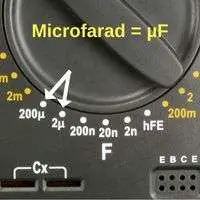
The symbol for microfarads on a multimeter is µ or µF. All subunits of a Farad( SI unit F) are written with or under the F sign, such as µF(microfarad), nF(nanofarad), and mF(millifarad), where F denotes Farad and capacitance settings.
However, in some other multimeters, the –|(– sign is labeled for capacitance instead of F.
So, the signs µF, µ under F, or –|(– indicate the microfarad range setting on a multimeter. Other subunits of a farad on a multimeter are nF(nanofarad), mF(millifarad)
Check the image to understand the symbol of microfarads.
What is a Microfarad?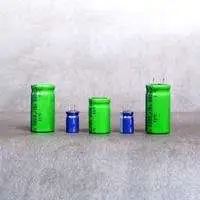
Microfarad is a subunit of a Farad (F) and is symbolized by µF. So microfarad range capacitors are used in home appliances and circuits.
Microfarad is a millionth time of a Farad, which means one microfarad is equal to 0.000001 or 10-6 farads, and one farad is similar to 1000000 or 106 microfarads.
Most capacitors used in home appliances are ranged from microfarads.
What is Capacitance?
The ability of a capacitor to store charge is called capacitance. It is calculated as the ratio of the amount of stored charge to the resulting voltage.
The formulae of capacitance are C=Q/V, where Q denotes charge and V is voltage or potential difference across the capacitor plates. SI unit of capacitance is Farad.
What is Capacitor?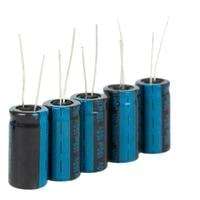
A capacitor is a passive electronic component(which does not generate energy) of a circuit that stores little electric power.
Capacitors are used to maintain a power supply for a concise period while the device is disconnected from the power supply. The energy within the capacitor prevents from discontinuity of a circuit.
How does a Capacitor Work?
A capacitor consists of positive and negative plates that store an equal amount of opposite charges separated by a resisting material called a dielectric.
When energy from an active power supply reaches a capacitor, it tries to pass from one plate to another with its maximum capacity or force. The Dielectric (insulator or poor conductor) between the two plates allows a controlled amount of current to flow to the circuit.
If the voltage supply drops, capacitor plates discharge themself to provide constant voltage to the circuit for a very short time.
Types of Capacitors
Capacitors are divided into two main categories depending on their functioning and use polarized and non-polarized capacitors.
Polarized Capacitors:
Polarized or electrolytic capacitors have a +ve and -ve terminal (pins) assigned that must be installed in the direction of current flow in a circuit.
The positive terminal (pin) should be connected to the live wire or positive battery terminal, and the negative pin to the negative battery terminal or ground wire.
Polarized capacitors are used to filter power supplies and noise in electronic devices. They can store more charge than a non-polarized capacitor.
Aluminum, hybrid, and tantalum capacitors are the polarized ones most commonly used.
Non Polarized Capacitors:
Non-polarized capacitors can be installed/used in any direction in a circuit. The most common non-polarized capacitors are ceramic capacitors, glass, and Teflon capacitors.
These capacitors are mostly used in AC circuits, home appliances such as coupling (transformer, generator), and decoupling circuits (microcontrollers and microprocessors).
How to read a capacitor?
Capacitors are marked with the capacity to store charge (capacitance) and other symbols. Before buying or installing a capacitor in a circuit, it’s essential to check the capacitance reading written on the body to know if the capacitor is compatible with your device.
A farad capacitor is quite large for home appliances, that’s why most capacitors range in microfarad, nanofarad in picofarad.
So you must know the symbols of capacitance ranges labeled on a capacitor.
- Microfarad (10-6 F) range capacitors are marked with µF, uF, or mF, where µ is the SI unit for micro; however, simple u or m can also be labeled as micro, while F denotes farad. A numerical value along the microfarad symbol denotes the exact capacity of a capacitor, such as 50µF.
- Nanofarad (10-9 F) ranged capacitors are marked with an nF sign, such as 450 nF.
- Picofarad (10-12 F) capacitors are marked with pF or µµF(10-6F X 10-6F= 10-12 F)
Other symbols on capacitors you may watch
MFD= M (micro) and FD (farad)
VAC = Capacitor for AC circuits
VDC = Capacitor for DC circuits
KV = kilovolts (1000 V)
50µF ±5% = ±5% indicates that the capacitor can range 5% greater or lower than the mentioned values.
Farad (F), microfarad (µF – 10-6F), nanofarad (10-9 – F) and Picofarad (10-12 F)conversions.
| Name-Symbol | in Farads |
| Picofarad (pF) | 1 pF=10-12 F |
| Nanofarad (nF) | 1 nF=10-9 F |
| Microfarad (μF) | 1 μF= 10-6 F |
| Millifarad (mF) | 1mF=10-3 F |
| Farad (F) | |
| Kilofarad (kF) | 1kF=103 F |
| MegaFarad (MF) | 1MF=106 F |
How to Measure Capacitance with a Multimeter?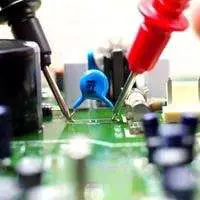
A multimeter supplies a little charge to the capacitor and finds its capacitance with the output voltage ratio. Below we will discuss how to check capacitance with a multimeter.
- First, any capacitor you are working on should be appropriately discharged to zero voltage; otherwise, it can damage the multimeter. To discharge the capacitor, attach both nodes of the capacitor with a resistor or a piece of metal.
- Insert the black probe in the port labeled with COM and the red probe marked with the ‘–|(‘– sign.
- Turn on the multimeter.
- Rotate the switch (knob or dial) to capacitance mode, labeled with F or –|(–, and select the required range.
- Check the capacitance value labeled on the capacitor. It will help you to adjust the multimeter above the capacitance of the capacitor. Suppose your capacitor is 13 µF; then adjust the micrometer to 20µF so the capacitor value is in range.
- Attach the black probe to the negative terminal and the red probe to the positive terminal of the capacitor.
- If there is no value available on the capacitor, adjust your micrometer switch to the lowest reading. If the capacitor is above the multimeter’s range, it will show a static one on the screen.
- Increase the multimeter capacitance reading until you get the capacitance value of the capacitor.
- You will not get the capacitance if the capacitor is damaged or expired.
Conclusion
So, the symbol of microfarad on a multimeter is µF. Microfarad is the subunit and millionth() part of a farad(F). Microfarad
Follow our easy guide to test a capacitor and measure capacitance with a multimeter. Share your opinions in the comments section.
Related Guides:

